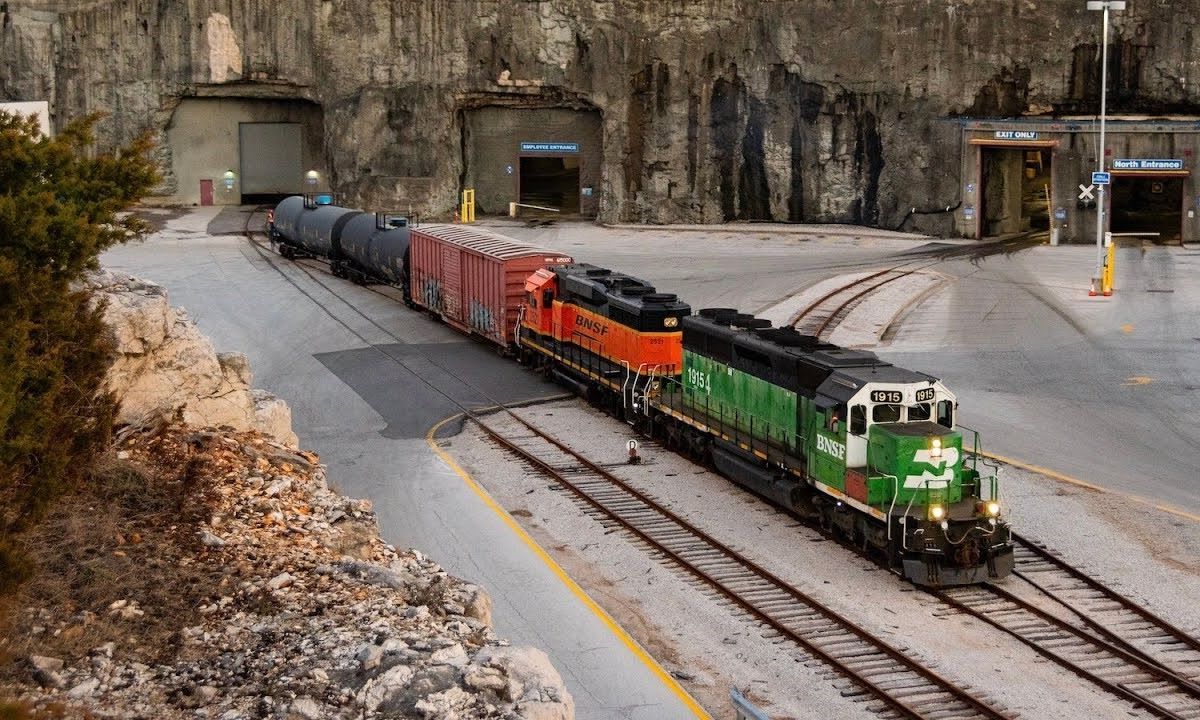Missouri’s Hidden Underground Railroad Paths To Freedom

Missouri holds a significant place in American history, especially when it comes to the Underground Railroad. This network of secret routes and safe houses helped enslaved people escape to freedom. Missouri's unique position as a border state made it a critical area for those seeking liberty. Courageous individuals risked everything to help others find safety, often using hidden paths and clever disguises. Today, you can still trace these historic routes and learn about the brave souls who fought for freedom. Visiting these sites offers a glimpse into the past, showing the strength and determination of those who refused to accept oppression. Whether you're a history buff or just curious, Missouri's Underground Railroad paths provide a powerful reminder of the fight for justice and equality.
Missouri's Secret Underground Railroad Routes
Missouri played a crucial role in the Underground Railroad, offering secret paths to freedom for many enslaved individuals. These routes, hidden in plain sight, were vital in the journey toward liberation. Let's explore some of these significant locations.
Key Locations in Missouri's Underground Railroad
Missouri's landscape is dotted with sites that were once part of the Underground Railroad. Each location holds stories of courage and resilience.
Hannibal
Hannibal, known for its connection to Mark Twain, was also a key stop on the Underground Railroad. The town's location along the Mississippi River made it an ideal spot for those seeking freedom. Many safe houses in Hannibal provided shelter and guidance to escapees.St. Louis
As a bustling city, St. Louis offered numerous hiding places for those on the run. The city's free Black community played a significant role in assisting escapees. Churches and private homes served as safe havens, helping many reach the next stage of their journey.Lexington
Lexington, with its strategic position along the Missouri River, was another important stop. The town's residents, both Black and white, worked together to aid those seeking freedom. Secret tunnels and hidden rooms in local homes provided refuge.Cape Girardeau
Located on the Mississippi River, Cape Girardeau was a crucial point for those traveling north. The town's residents, including many abolitionists, offered support and shelter. The river itself was often used as a means of escape, with boats ferrying individuals to safety.Weston
Weston, a small town near the Missouri River, played a significant role in the Underground Railroad. The town's residents, including Quakers and other abolitionists, provided assistance to those fleeing slavery. Hidden compartments in homes and barns offered protection.
The Courageous Individuals Behind the Routes
Behind every successful escape were brave individuals who risked their lives to help others. These unsung heroes, both Black and white, worked tirelessly to ensure the safety of those seeking freedom.
John Berry Meachum
A former enslaved person himself, John Berry Meachum became a prominent abolitionist in St. Louis. He established a "floating school" on the Mississippi River, providing education and refuge to those escaping slavery.Mary Meachum
Mary Meachum, John's wife, was equally dedicated to the cause. She organized a daring escape across the Mississippi River, leading a group of enslaved individuals to freedom. Her bravery is commemorated at the Mary Meachum Freedom Crossing in St. Louis.James Milton Turner
Born into slavery in St. Louis, James Milton Turner became a leading figure in the fight for freedom. After gaining his freedom, he worked tirelessly to assist others, using his knowledge and connections to aid escapees.
Preserving the Legacy of the Underground Railroad
Today, efforts are being made to preserve these historic sites and honor the legacy of those who fought for freedom. Museums, historical markers, and educational programs help keep the stories of the Underground Railroad alive.
The National Underground Railroad Museum
Located in Maysville, Kentucky, just across the river from Missouri, this museum offers insight into the history of the Underground Railroad. Exhibits highlight the courage and determination of those who risked everything for freedom.The Freedom Center in St. Louis
This center is dedicated to preserving the history of the Underground Railroad in Missouri. Through exhibits and educational programs, visitors can learn about the state's role in this important chapter of American history.
Reflecting on Missouri's Underground Railroad
Missouri's Underground Railroad paths offer a glimpse into a brave past. These routes were lifelines for many seeking freedom, showcasing the courage and determination of those who risked everything. Visiting these sites today allows us to honor the stories of those who fought against slavery and injustice. From caves to safe houses, each location holds a piece of history that shaped the nation. Exploring these paths not only educates but also inspires, reminding us of the power of resilience and hope. Missouri's role in the Underground Railroad is a testament to the human spirit's unyielding quest for liberty. As we walk these paths, we connect with a past that continues to influence our present and future. Understanding this history encourages us to strive for a world where freedom and equality are realities for all.

